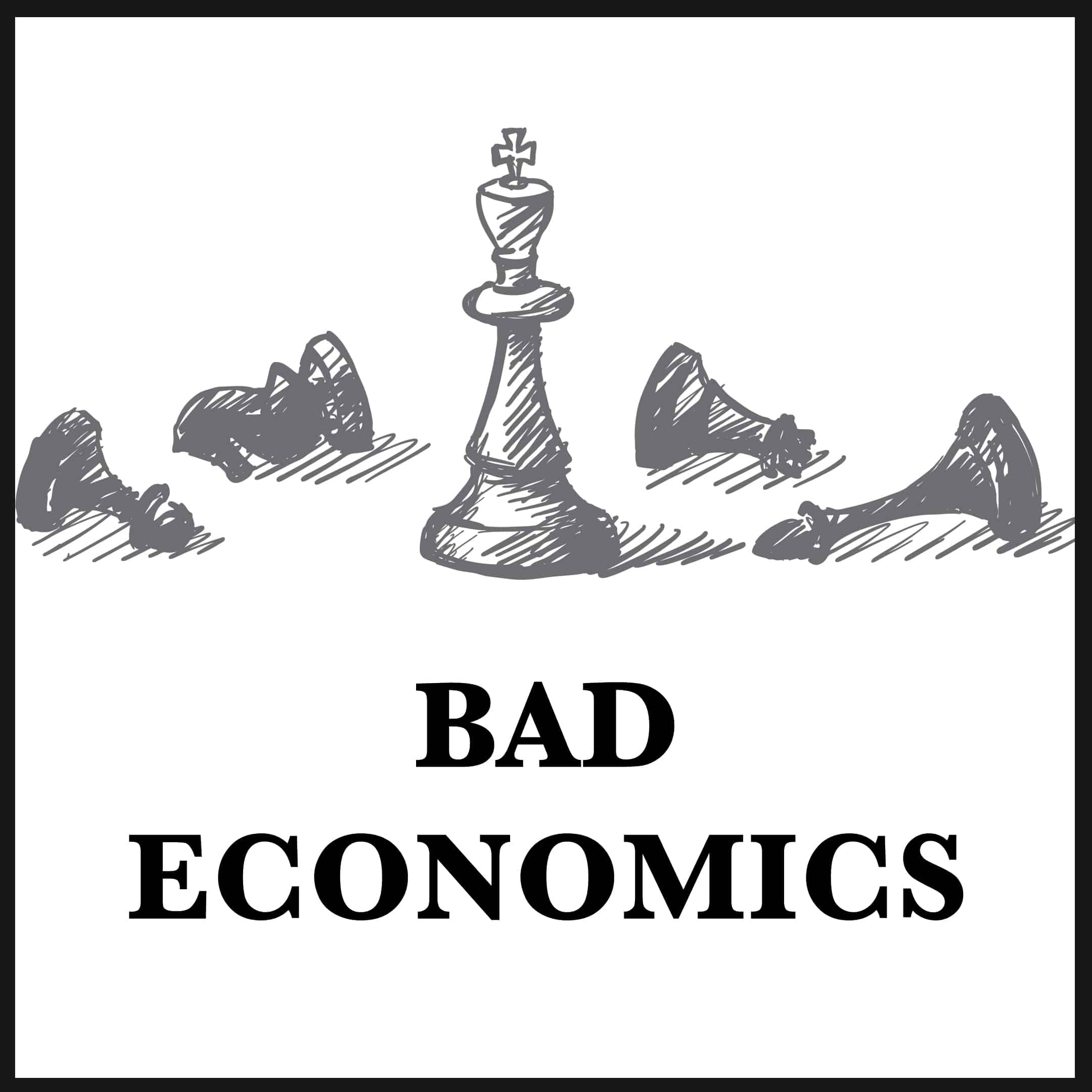On its best day, Government still fails us. How we can improve our skill level to clear these upcoming high hurdles (from healthcare to climate change).

By Robert Simmons
Ed Yong, science writer at The Atlantic, has tracked the coronavirus SARS‑CoV‑2 since it first made landfall back in late January. While Covid-19 climbed to #3 in the US rankings for deadliest diseases in 2020 (behind heart disease and cancer), Yong makes it clear that, as viruses go, COVID-19 is just slightly above average in skill level. This coronavirus, says Yong, is “neither as lethal…nor as contagious” as diseases we have faced before. As we continue to 1) squeeze animal populations into tighter spaces around us, and 2) slowly cook ourselves in Earth’s climate-controlled convection oven, viruses will continue to pop out and mingle with the general human population.
Yong feels that with as many as 40,000 viruses currently roaming the quiet countryside, some are bound to be real monsters. With these kinds of numbers, he also does not see how we can realistically “stop an infection from ever arising”.
Wait a moment. So before we even run a play, we are going to punt the ball? We’re relinquishing all our offense and going straight to defense, with no attempt to stop it at the source?
At the time of this article, over 271,000 Americans have died from this current coronavirus, called SARS-CoV-2. The first deadly coronavirus outbreak, SARS-CoV, happened in 2002. The most deadly coronavirus, MERS-CoV, with a fatality rate of nearly 37%, fired its warning shot across our bow back in 2012.
Fast forward to 2015, when the World Health Organization (W.H.O.) finally brought in experts from around the world to weigh in on viruses that were clear and present threats to humans, but for which no vaccines or drugs were currently in development. The group has continued to meet every year since 2015, and every year they make a “Most Wanted” list of all known killers currently at large (people are good at making lists), yet in the 18 years since SARS-CoV, no prevention funding has been made available. For the scientists assigned to this task, it is a constant source of irritation. Peter Daszak, in charge of presenting the SARS-CoV case to the W.H.O. committee, put in his two cents worth about it, when speaking to writer Jennifer Kahn in The New York Times Magazine:
The problem isn’t that prevention was impossible. It was very possible. But we didn’t do it. Governments thought it was too expensive. Pharmaceutical companies operate for profit.
Kahn herself went on to point out that
The W.H.O., for the most part, had neither the funding nor the power to enforce the large-scale global collaboration necessary to combat [coronaviruses].
Both Ed and Jennifer’s articles are great journalism, and worth a full read. They contain all the information necessary to solve this problem, but as usual, we will do nothing about it. Why? Because the problem is systemic, or structural. Cracks within the foundation of a structure will manifest themselves in many ways, so the benefit of attacking the systemic root of any issue is that it will wind up solving many other issues along with it. The drawback of attempting to upgrade the systems that manage us, whether government or economics, is that we must also uproot the people currently in charge of those systems, who are clearly benefitting quite well just the way things are, and naturally will fight to maintain the “status quo” by any means necessary, until someone or something more powerful unseats them.
What these two articles point out are two different ways to attack this coronavirus problem. The first is attempting to prevent viruses from ever infecting a human host, which is an offensive or proactive strategy. The second is to go after the virus once it emerges and infects someone, which is a defensive or reactive strategy. Because of profit-based economics, we choose the latter: to spend no money on prevention, and simply wait for a war to break out. In accordance with Economic Darwinism, the most financially “fit” will profit from the ensuing destruction, then, in the aftermath, be sure to extol the virtues of any Economic Growth achieved, apparently as a justification for leaving a battlefield littered with corpses.
Forebrains everywhere know that while this mindset is ass-backwards from a human perspective, from the virtual world of profit-based economics, it is not only logical, it is inevitable. The externalities or by-products of a system based on profit-seeking inevitably will lead to wars between the things upon which we encroach, whether it be ourselves, the planet, or the many other organisms that inhabit it.
Also logical (and inevitable) is the fact that this current economic model grew out of something handed down from past “tradition”, and as many of us know, traditions die hard. Even as we continue to progress as individuals, from an earlier state of ignorance to one of more enlightenment, the systems that guide, inform, or rule us continue to lag way behind.
The reactive Economics we practice today is merely a remnant of the reactive model of survival we perfected long ago. Fighting, fleeing, consuming, reproducing; these are our greatest attributes.
Forebrains would be quick to point out that viruses and cockroaches (essentially all organisms) are equipped with this exact same survival skill toolkit. The fact we are #1 in the rankings around here is, without question, our five-star forebrain, and if we ever allow it to fully take control of the wheel, it would steer us out of harm’s way in many situations such as this one.
So how would the forebrain tackle this problem? The current coronavirus is not only beating us up, it is making us look bad while doing it. Step one would be to assess our failures from a healthcare perspective. The good news is that we already know where we failed: everywhere. Our offense, defense, and special teams all stink. We failed in every possible way.
OFFENSE
Preventive care (or prevention), is what Americans do to keep from getting sick. It is the exercise to reduce the stress. It is the better diet to avoid diabetes or heart disease. It is cutting down on alcohol or smoking to prevent liver or lung disease. It’s wearing a mask and social distancing, and in the case of government, having plans in place for larger-scale emergencies (like outbreaks of a deadly virus). It could even be getting ahead of the curve by searching for cures to “Disease X”, the virus that may be coming soon to a quiet countryside near you.
Leading virologist (and master of understatement) David Ho points out,“I don’t think we’re very good at prevention.” Dr. Ho is not wrong, but is it really fair to say we’re failing at prevention when we don’t even try?
Private healthcare did not get to be the money-maker it is by stopping diseases from coming. This is why the job of prevention has fallen to government, who at least attempts to take care of people, while economics only pretends to do so.
Back in the day, Jonas Salk eradicated polio with a vaccine he gave to the people of the world for free. Scotsman Sir Alexander Fleming gave us penicillin for free as well. Ironically, 16 years after his discovery, two Americans, Robert D. Coghill and Andrew J. Moyer, patented the method of penicillin production in the US. When Fleming found out he let it be known that
I found penicillin and have given it free for the benefit of humanity. Why should it become a profit-making monopoly of manufacturers in another country?
This is the kind of profit-seeking that gave birth to our current pharmaceutical price-gouging. Sir Frederick Grant Banting and John James Rickard Macleod, who received the Nobel Prize in Medicine for their discovery of insulin, sold the patent rights for $1, claiming the discovery of insulin belonged to the world. Currently, several Big Pharma companies have filed multiple patents, and the price of insulin has spiked to as much as $1487 for 20-milliliter vial of Humulin R U-500.
Bottom line: people do not take care of themselves, do not like being told what to do, and do not like giving money to government, even though government is the only lifeline that exists for them, should a crisis arise. Meanwhile, the private sector sells us all the things that ruin our health, then profits from fixing us back up with defensive healthcare tactics. To “maintain the status quo”, it buys politicians who tell us not to give money to government, even as their constituents and donors receive the bulk of government assistance. Festering even deeper below the surface is the inequality issue, where poverty and “racism” reside; governments are underfunded because people with the money do not want to give it back to help the people who cannot get enough money through their only means: laboring for the people with the money.
DEFENSE
Defense is why Private American healthcare cost over $4 Trillion per year; it’s bend-don’t-break goal line defense is designed to keep disease out of the end zone, once it has driven 99 yards down the field, taking many of us with it. Reactive measures are always more costly, just the way the private sector likes it.
Ironically, in order to increase profit margins, most hospitals will only keep enough supplies on hand for the average mass shooting or multi-car pile-up, and nowhere near enough to accommodate any long term crisis. Additionally, hospitals already need to fill their beds to capacity on an average day, in order to maximize profits; they have little room left for any long-term emergency situations. Finally, in order to shave dollars off the cost of supplies, large corporations like American Healthcare use the global supply chain, where, for example, cheaper face masks are purchased from China, or nasopharyngeal swabs are obtained from Italy. Unfortunately, these two items, desperately needed here in the US, were both produced in COVID-19 “hotspots”. China and Italy naturally chose to provide for their own people first, delaying the US from receiving them in a timely manner.
In the bottom line of profit-based healthcare, people’s deaths are more of an acceptable loss than the loss of profits that will occur if hospitals put patient lives first. This is where government must subsidize the private sector, not only to save the lives of its people, but to maintain the illusion that private-sector “free market” economics actually works.
In the current crisis, government, through our taxes, was supposed to have medical supplies stockpiled in case of such an emergency. Unfortunately, the 2009 flu pandemic used up a lot of our National Strategic Stockpile, and taxpayer money was never allocated to fully replenish it. We conveniently blame government for this failure, not realizing that the private sector is in fact failing us in almost every conceivable way, which spreads government funding quite thin, as it tries to plug several holes at once. Additionally, people demand lower taxes, which forces government to correctly guess the best way to allocate this insufficient funding, and apparently, replenishing the medical stockpile fell below other priorities. Higher priorities in the Trump Administration were bulking up the military and building a wall, for instance, both intended to counter perceived threats less tangible, which shows why level-headed forebrain thinking, and not politics, should decide our bigger priorities.
To add insult to injury, if private healthcare did manage to save anyone from the virus, those people often received six-figure medical bills in return. In the virtual world of economics, this must mean that life is in high “demand”.
Bottom Line: private sector healthcare is better at making money than saving lives: it kills 161,000 patients unnecessarily each year, is not designed to help us in a crisis, is not designed to do anything preventive, and when people cannot pay these exorbitant rates, government is forced to step in and foot the bill, at our expense.
SPECIAL TEAMS
From the Media to the Scientists to the Politicians, there are many special teams that we optimistically hope are on our side when things get serious. Unfortunately, if a business has any ties to the private sector, then profit is going to dictate the decision-making process. Dollar signs drove the thinking in everything the media chose to tell us. The mad rush for the cure was dollar-driven as well. And when our leaders needed to give us a unified message about how to best survive this crisis, we were met with the politicization of wearing a face mask, socially “distancing”, or even staying at home.
Despite how the profit-based economy failed us this time, it will still have plenty of chances to fail us again and again in the future. Contrary to popular belief, whatever doesn’t kill us will NOT make us stronger, because unless we learn anything from the experience, and take proactive or actionable steps to improve the next outcome, we may eventually encounter a storm we cannot weather.
If we wish to weather the big storm coming our way, we can no longer take the easy path toward superficial band-aid solutions. We must make the larger leap and fix the systemic flaw that, not coincidentally, is at the core of every one of our current problems.
In terms of our national healthcare system, we must first declare our health as essential to life (duh); this allows us to list it underneath the heading “Our Right to Life”, which then puts healthcare under the purview of our government, because it is government that endowed us with this unalienable right in the first place; this would also put government in charge of enforcing it. It is only in this way that we can wrestle healthcare from the cold dead hands of the private sector, and turn our Universal Healthcare into a publicly managed system. The Third Option has run the numbers, and it can be done for as little as $1 Trillion, not the current $4+ Trillion private sector price tag.
Included in the $1 Trillion price:
- Higher pay for health care workers
- More funding for cures to cancer, Alzheimer’s, MS, virus vaccines, diabetes et al
- More funding for mental health and preventive care
- A national database, so everything from new innovations to emergency information can be shared with every healthcare facility in real time
- A complete healthcare network, including doctor and dental care, urgent and emergency care, independent and assisted care, behavioral and rehabilitation care, etc.
- Economies of Scale pricing on bulk medications, supplies, equipment, etc.
- No profit-seeking costs, or C-Suite Salaries
- Complete coverage for every US resident
Before we take the next leap into a system like Medicare for All, let’s pause and realize that while Medicare for All provides an umbrella of coverage for everyone, none of the problems will actually go away as long as the private sector runs the show. Let’s just make the larger leap to Publicly managed healthcare, funded by premiums, copays, and common sense taxes based on the individual usage of anything that lowers health outcomes. For more on these “healthcare taxes”, go to the Third Option.

 Bad Economics
Bad Economics